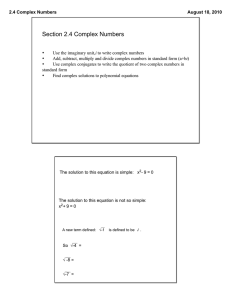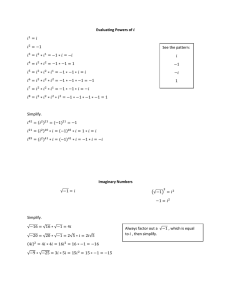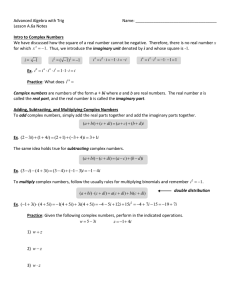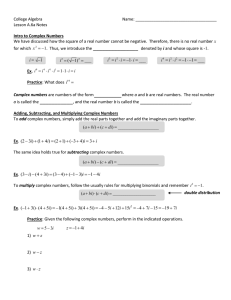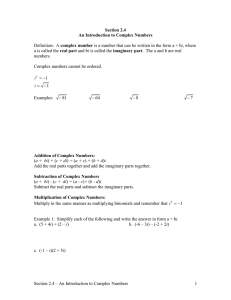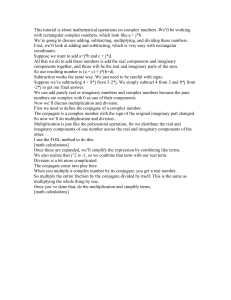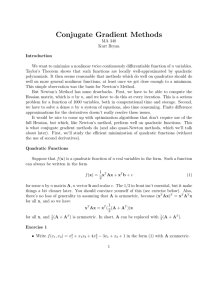Section 2.4 Complex Numbers
advertisement
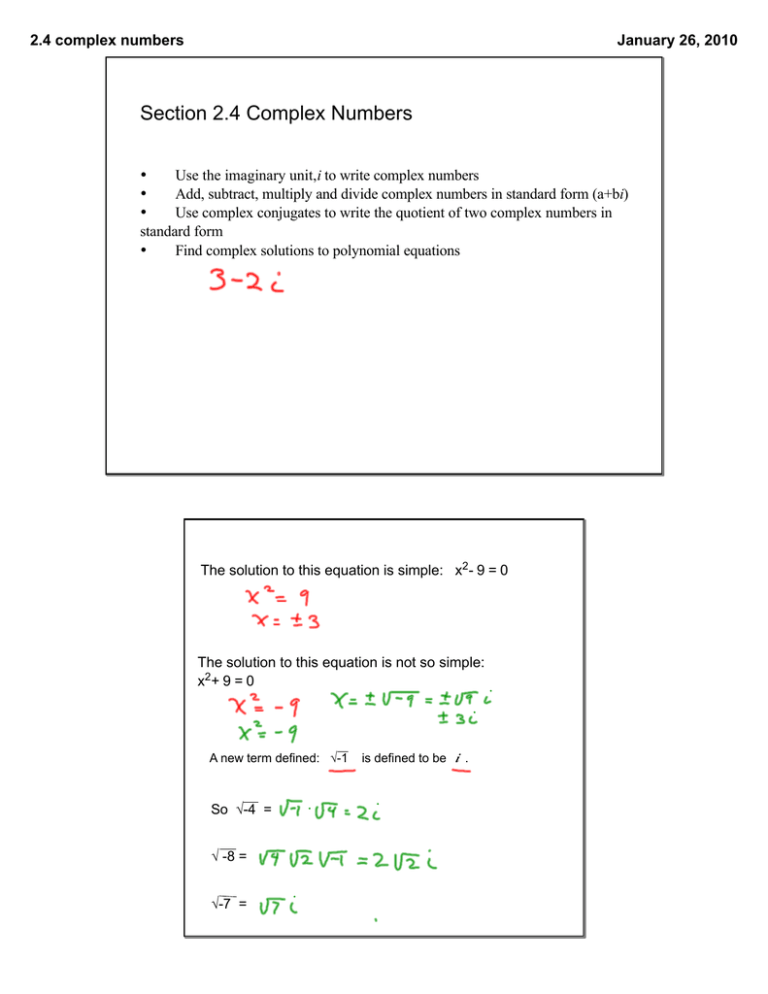
2.4 complex numbers January 26, 2010 Section 2.4 Complex Numbers • Use the imaginary unit, i to write complex numbers • Add, subtract, multiply and divide complex numbers in standard form (a+bi) • Use complex conjugates to write the quotient of two complex numbers in standard form • Find complex solutions to polynomial equations The solution to this equation is simple: x2- 9 = 0 The solution to this equation is not so simple: x2 + 9 = 0 A new term defined: √-1 So √-4 = √ -8 = √-7 = is defined to be i . 2.4 complex numbers January 26, 2010 Let's look at some powers of i : i2= i3= i4= i5= i6 = We see a pattern developing, so can find any power of i . i 38 = i 65 = A complex number a + bi has a real part i 321 = a and an imaginary part, bi . Operations on these are not surprising. To add two complex numbers, add the real parts and add the imaginary parts. Subtraction is the same idea: (3-2i) + (5-4i) = (3-2i) - (5-4i) = To multiply two complex numbers, you do what you would when multiply two binomials: (3-2i) · (5-4i) = 2.4 complex numbers January 26, 2010 Division of two complex numbers is a bit trickier. We need to introduce another term. The conjugate of a+ bi is a-bi. The conjugate of a-bi is a+bi. Write a conjugate for each of these: -3 + 4i 2 - 5i 2+i Now multiply each of the conjugate pairs above, something amazing happens. When you multiply a complex number by its conjugate, the result is a real number. Now we can learn how to divide two complex numbers. To divide a+bi by c+di, multiply the numerator and denominator by the conjugate of the denominator. (3-2i) ÷ (5-4i) = (3-2 i ) (5-4i ) 2.4 complex numbers January 26, 2010 Now we can write complex solutions to quadratic equations. Solve for the roots of each of these simplifying the radical expression as much as possible. a) 3x2- 2x +5 = 0 b) 4x2+6x + 3 = 0 What does this mean about the x-intercepts of the graphs of these functions? a) y = 3x2- 2x + 5 b) y = 4x2 + 6x + 3 If the solutions to a quadratic equation are complex, then the quadratic does not have x-intercepts. It will not cross the x-axis. 2.4 complex numbers January 26, 2010 Roots of a quadratic: If ax2 + bx + c = 0 then x = -b±√b2-4ac 2a Are the roots of these real? If they are real, are they rational or irrational? a) y = 3x2 - x + 5 b) y = 3x2 + 8x - 5 c) y = x2- x + 2 d) y = 3x2- 8x - 3
